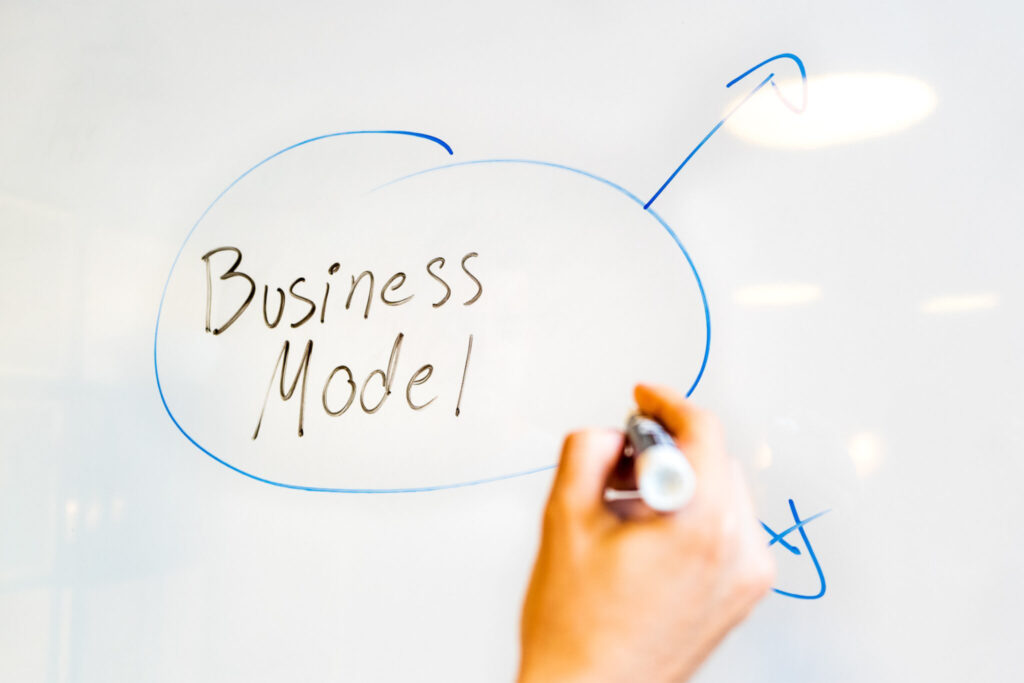Author: EBAN
During the two-part webinar on Business Model Canvas organised by EBAN (European Business Angels Network), Zdenek Fred Fous, co-founder of Encubate, explained how to work with this effective tool to design or adjust a company’s business model.
Business Model Canvas was introduced in 2004 by Dr. Osterwalder and Prof. Pigneur and it is one of the most popular tools for analysing and visualising business models. It is useful because, unlike the long business plans, it allows to focus on certain important aspects of the business model in only one organised, clear and efficient page. It also gives emphasis on the customer, rather than the product or service, and it reduces the risk of failure, thanks to the clear connections between the different elements that give greater visibility on the risks.
To fill in the Business Model Canvas, you should start by answering to the question “do customers want our product/service?”. This is the desirability part and is formed by Customer Segments, Value Proposition, Channels and Customer Relationships. Then, you can address the issue “how do we make money?”, by filling the revenues streams section. Once understood where the revenues come from, it is necessary to consider whether it is possible to deliver the product/service. This is the feasibility part and is formed by Key Activities, Key Resources and Key Partners. Finally, you should define the cost structure for these activities, resources and partners. Revenue Streams and Cost Structure make up the viability part of the canvas, that answers to the question “what is it worth?”.
This is the recommended order to follow especially at the beginning and it is logical. Customer Segments are the first element that need to be identified because they are the ones for whom you are creating value. Without the customers, generating revenue or not, the business model cannot work. Once the customer segments are identified, it is important to think with them about the Value Proposition, writing 1 or 2 sentences maximum on the problems you are solving, rather than the product/service and its special features. This way, you will avoid having a value proposition that is important only internally and not for the customers. To deliver the Value Proposition, you need Distribution Channels and Customer Relationships across the whole journey: from awareness, to evaluation, to purchase, to distribution, to post purchase support. After the pandemic, in person channels are viable again and they are often much more effective than an online meeting – even though you need to remember your business card. To find out-of-the-box Channels that could work, you brainstorm at least 30 different ones with your team.
If the Customers agree with your Value Proposition and the Channels and Relationships to deliver it with, they will contribute to your Revenue Streams. However, the Business Model Canvas, is a simplification and here we could just specify in which percentage we expect each revenue stream to contribute to the overall revenues and check where the largest chunk is coming from. To deliver the Value Proposition, maintain Distribution Channels, cultivate Customer Relationships and manage Revenue Streams, Key Activities and Key Resources need to be identified. Key activities differ from the Value Proposition as they are much more operational and less unique. For some of the activities and resources, though, you will need the support of Key Partners that are able to produce higher quality at a lower price. Activities and Resources also generate Costs and it is necessary to understand if they are aligned with the Value Proposition. In particular, if there is a cost-driven structure, the company is providing a low-cost service and will minimise costs while operating the business. If there is a value-driven structure, the customer will pay more, but the price reflects also higher costs for the company.
Once this logic has been followed at the beginning, then, it is possible to go back and forth to adjust it. As a matter of fact, to work properly, the Business Model Canvas should be revised multiple times. In particular, it should be shown to as many customers and partners as possible. A Business Model Canvas is right when customers agree with the Value Proposition or partners agree with what they can do. If they don’t find it right, you need to revise it. This will be necessary especially if the company is at an early stage.
These are only some of the insights shared by Fred during the webinar. To know more, you can access the recordings here.
The professionalisation of entrepreneurs has always been one of EBAN’s priorities. EBAN is the pan-European representative for the early-stage investor community, representing a sector estimated to invest 7.5 billion Euros a year and playing a vital role in Europe’s future, notably in the funding of SMEs. It is common knowledge that to have a fully performing market we need an entrepreneurial community with great potential and an enabling ecosystem. It is therefore in the interest of investors and of EBAN to contribute to a developed entrepreneurial community and to advancing the investment readiness of start-ups as well as dealing with governments to influence public policy. For this, EBAN relies on a pool of business angels as trainers, all of whom are successful entrepreneurs who share first-hand knowledge both on making investments and on setting up and growing companies.

